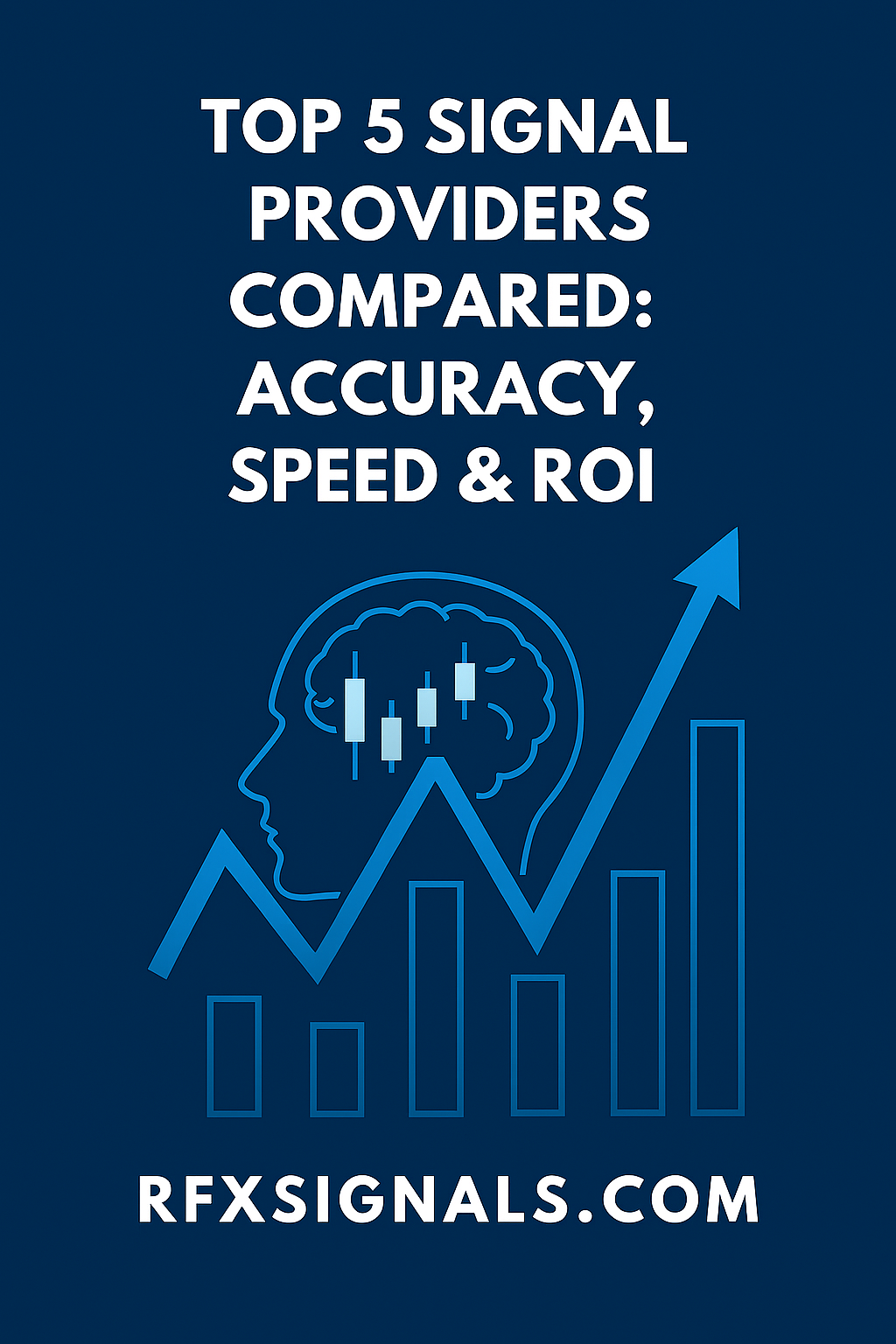
Top 5 Signal Providers Compared: Accuracy, Speed & ROI
Choosing a signal provider isn’t just about claimed returns. Accuracy, execution speed, transparency, and realistic ROI assumptions matter most. This guide compares five leading provider types, the metrics to inspect, and a practical checklist so you can pick the right service for your goals.
Why comparing signal providers properly matters
Many providers advertise high returns, but those numbers are often cleaned, backtested, or cherry-picked. A meaningful comparison focuses on repeatable metrics: accuracy (how often signals are correct relative to expectation), speed (how fast the trade can be executed at advertised price), and ROI adjusted for risk, spread and slippage. The goal is to identify providers that deliver consistent edge under realistic conditions.
How we compare providers — the framework
We use five dimensions to compare providers:
- Accuracy: percent of winning trades vs total trades and expectancy.
- Speed & latency: time from signal to execution and slippage statistics.
- Realized ROI: net of spreads, commissions and typical slippage.
- Transparency & track record: live verified results, sample size, and reporting method.
- Risk management: position sizing rules, stop discipline, and max exposure limits.
The top 5 provider types (what you’ll usually find)
Providers cluster into types — each has strengths and trade-offs:
1. Human-curated signal services (experienced traders)
Pros: context-aware, adaptive to macro events, often conservative. Cons: limited capacity, human bias, slower execution. Best for: discretionary traders who want explanation & trade context.
2. Algorithmic/AI signal providers
Pros: scans many markets, runs 24/7, fast. Cons: risk of overfitting, opacity, needs monitoring. Best for: high-frequency or systematic traders comfortable with automation.
3. Copy-trading platforms (social/copy services)
Pros: easy to follow proven traders, good for passive users. Cons: crowd impact, leader survivorship bias, and platform risk. Best for: beginners who prefer hands-off execution—test with small capital first.
4. Hybrid services (signals + execution API)
Pros: combines algorithmic signal generation with human oversight or execution automation. Cons: higher cost, complexity. Best for: traders who want the speed of automation and safety of human checks.
5. Broker-provided signals & in-platform indicators
Pros: seamless execution, integrated. Cons: potential conflict of interest, limited transparency. Best for: traders wanting simplicity but verify fills carefully.
Quick comparison table (what to look for)
| Provider Type | Accuracy | Speed | Realistic ROI | Best For |
|---|---|---|---|---|
| Human-curated | Moderate (50–65%) | Slow-Moderate | Medium | Discretionary traders |
| Algorithmic/AI | Variable (45–70%) | Fast | High (if robust) | Systematic traders |
| Copy-trading | Depends on leader | Varies | Variable | Beginners |
| Hybrid | Higher (if well-managed) | Fast | High | Serious traders |
| Broker signals | Moderate | Fast | Low-Medium | Convenience seekers |
Deep dive: accuracy vs expectancy
Accuracy alone is misleading. A strategy with 70% wins but very small winners and large, rare losers can be disastrous. Expectancy — average P&L per trade — is the better single-number summary: Expectancy = (Win% × AvgWin) − (Loss% × AvgLoss). When comparing providers, request both win-rate and average win/loss size, not only percent winners.
Execution speed & slippage — the hidden ROI killer
A provider might publish fast signals, but your fills determine real ROI. If signals are delivered by chat or email, execution may be delayed, increasing slippage. Providers that offer direct API execution or broker integration generally minimize this problem. Always test on a demo account to measure real slippage against the provider’s claims.
Transparency & statistical validity
Beware of short track records and tiny sample sizes. A provider with 20 trades and 80% wins is far less convincing than one with 2,000 trades and 55% wins. Ask for: live verified statements (e.g., Myfxbook, broker statements), raw signal logs, and clear definitions of how they calculate returns.
Questions to ask any signal provider
- Do you publish live results or only backtests?
- How do you handle spread, slippage and commissions in reported ROI?
- Can I get raw signal logs to independently backtest?
- What’s your typical time-to-fill and recommended execution method?
- How many concurrent clients use the same signal (crowd impact)?
- What are the maximum drawdown and worst monthly loss historically?
A practical selection checklist (use before subscribing)
- Verify > 300 live trades or multi-year live track record.
- Confirm provider reports ROI net of realistic spreads and commissions.
- Forward-test on demo for 30–90 days and record slippage.
- Prefer providers that offer API/broker integration for fast fills.
- Check risk controls: max exposure, size caps, stop enforcement.
Case study (how small slippage reduces ROI)
Imagine a provider with 100 trades/month average return 1% per trade gross. If average slippage+spread eats 0.3% per trade, monthly net drops 30%. Over time, that gap compounds — so execution matters as much as signal accuracy.
How RFXSIGNALS approaches provider evaluation
We combine automated backtesting, live forward-samples, and independent verification. Our priority: realistic reporting, clear risk rules, and API execution where possible. If you want, we publish a sample signal log and a demo-forward test so subscribers can independently verify performance.
Related posts (internal & outbound link opportunities)
Final checklist & next steps
When choosing a signal provider, prioritize transparency, realistic ROI calculations, and execution quality. Start small, forward-test, and only scale after verifying fills, slippage, and risk controls in your broker. If you want a personalized shortlist based on your capital, pair preferences and risk tolerance, reply with "Shortlist me" and we’ll prepare a tailored comparison.